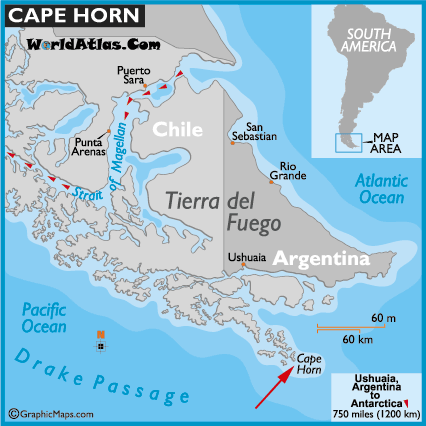 |
| The sign reads, “fin del Mundo,” the end of the world. |
Today’s photos are from this date in 2017 when our ship was sailing the coast of South America and docked in Ushuaia, Argentina, for the day. For more photos, please click here.
It was quite a day when our ship docked in Ushuaia, Argentina, when only a little more than a month later, we flew back to this fantastic city to board our cruise to Antarctica for an incredible expedition to see the wonders of our seventh continent we’d yet to see.
 |
| We were bundled up in Ushuaia. It was cold! |
We decided to stay in Buenos Aires, Argentina, where the cruise ended on December 23, 2018, for a month while awaiting the Antarctica cruise, staying in a boutique hotel in the lovely Palermo district where we were able to go sightseeing and dine out daily. As we continue here through the holiday season, most likely, we’ll repost photos from that month while spending Tom’s birthday (December 23rd), Christmas eve and day, and New Year’s eve and day in Buenos Aires.
We stayed in that hotel from December 23, 2017, until January 24, 2018, to then fly back to Ushuaia, the most southerly city globally, to board Ponant Le Boreal (a luxury French ship/cruise line) to sail deep into Antarctica. It’s funny how we recall how challenging it was to be stuck in that hotel for a month, especially during the holidays.
 |
| An expedition ship was preparing to set sail for Antarctica. Soon, we’d be on such a ship. |
It’s ironic that now, after nine months in this hotel, we appreciated going out for walks, dining, and seeing the sights in the fantastic area. Wow! Little did we know at the time, we’d be in a hotel with no freedom of movement, ten times longer.
While walking, I encountered a man coming out of his room, asking him to pull his mask over his face. He was very kind, and we began chatting. He is an executive on a two-month stint in Mumbai, opening a new location for his worldwide company, and he, too, was appalled by how few Indian people wear masks.
 |
| It was almost summer in Ushuaia, but it was cold, and the mountains were still snow-capped. |
After all these months, it was nice chatting with someone, and it made me realize how hungry we’ve been for companionship and conversation with others. We’ve thoroughly enjoyed our daily interactions with the two of us. No offense intended for each other. But, it will be nice to chat with others.
Many of our friends in Marloth Park mention on Facebook about getting together once we arrive. It will be an entirely new experience for us. Of course, we’ll exercise the utmost of the usual precautions, wearing face masks, no hugging, social distancing, and most likely not dining together, as we’d done in the past.
 |
| An exquisite albatross sculpture. We especially enjoyed seeing many albatrosses in the port. |
Customarily, in South Africa, when people get together, they each bring their beverages in a “chill box,” whether it’s a happy hour gathering or a dinner party. In these cases, it’s helpful that no one touches one another’s beverages and glasses, further reducing the risk of infection. I am sure we’ll figure it all out, especially by ensuring we gather in small groups only.
On the agenda today? We are going to book two more months for the rental car, so by the time we arrive at the Nelspruit/Mpumalanga/Kruger airport, we’ll sign all three contracts, paying in advance, providing us with insurance on the rental cars included in our credit cards (in increments of one month). If this works, we’ll avoid the two-hour (round trip) driving time every 30 days to return the car and get a new contract. We’ll see if this works and report back later.
 |
| Most of the town is centered around seaport enterprises. |
As for the remainder of today? It will be the “usual.” We’re enjoying watching the series “The Crown” on Netflix after dinner each night. One of our thoughtful readers sent us a message suggesting we watch, “Call the Midwife.” We’ll give that series a try this afternoon when we wind down for the day and, of course, wind down to the 26 days until we depart India!
May your day be safe and pleasant.
Photo from one year ago today, December 17, 2019:
 |
| Tom and I and Jerry and Vicki in Arizona last year. We met them in January 2015 in Kauai, Hawaii. It was amazing to see them so many years later. For more, please click here. |








































